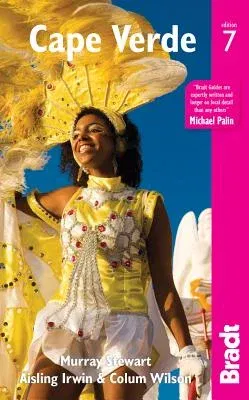This new 7th edition of Bradt's Cape Verde (Cabo Verde) has been fully
revised and updated and remains the only comprehensive English-language
guidebook available to the islands of this alluring Atlantic
archipelago, described by some as 'Africa light'. The guide includes
well-researched history and cultural sections, with a particularly
strong section on music, and brings an honest approach to reporting the
fragile balance between tourist development and protecting the
environment. This new edition reflects the many changes since the
previous one, including the introduction of charter flights from the UK
to Sal and the first casino-hotel on Sal, as well as providing full
information on how to make the most of the less developed islands away
from the main tourist hotspots. There is a massive Cape Verdean diaspora
in the USA, especially around the Eastern seaboard and Massachusetts in
particular. Many emigrants and their descendants return each year to
visit their extended families, particularly around festival times, and
many own houses in the archipelago. Stable and peaceful, quietly
isolated by its mid-Atlantic location, Cape Verde continues to grow
economically and to develop its tourist infrastructure at a leisurely
pace. With few natural resources, the islands are heavily dependent on
imports, foreign remittances and still to some extent on foreign aid.
The reduction in the latter has heightened the focus on the importance
of tourism as an economic driver and visitor numbers continue to rise.
Year-round sunshine makes Cape Verde a particularly appealing
destination. The archipelago is diverse, particularly in terms of its
tourist infrastructure. Sal and Boavista, the oldest of these volcanic
islands are flat with white-sand beaches that rival anything in the
world. Consequently, they attract 95% of Cape Verde's visitors, leaving
the other seven inhabited islands undeveloped. Hikers and those curious
to discover something authentic are drawn to them, spending their time
walking amongst the jaw-dropping mountainous landscapes of Fogo or Santo
Antão, taking some true time-out in tiny Brava or mellow Maio or
enjoying the cultural fusion of African, Portuguese and Brazilian
influences in the cities of Praia and Mindelo. The adventurous will find
adrenalin rushing as they profit from windsurfing and kitesurfing
opportunities, fuelled by strong breezes and Atlantic waves, while for
culture, Mindelo is the attraction with a constant backdrop of seductive
music, the thread which ties together the islands scattered across the
mid-Atlantic.

